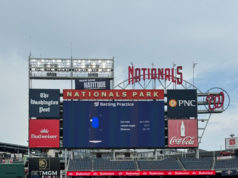Across America, two seemingly disparate forces are shaping the beer industry. While independent breweries are opening at historically high levels (7,190 in total, according to the federal Alcohol and Tobacco Tax and Trade Bureau), Americans are drinking less beer. A 2016 report released by the national trade association Beer Institute noted, “Although total volume declined very slightly in 2015, beer’s growth in consumer spending indicates strong health in the U.S. market.” The decline in domestic beer production seems to follow 2010 Beer Institute data and several intervening reports that found a decrease in per capita beer consumption.
How does this jibe with the beer-plosion cities are seeing? Even Fort Worth gas stations now regularly stock beers from local breweries like Rahr & Sons, Martin House, and Revolver. Matt Morriss, the owner and co-founder of Rabbit Hole Brewing, said it’s likely that as more Americans opt to sip on craft suds, they are leaving their days of guzzling Budweiser and Coors behind. Indeed, the craft beer market saw 6-percent growth last year, totaling 12.3 percent of the national market by volume, according to the trade group Brewers Association. While consumption may be waning, retail sales of beer continue to grow. “Our growth is at the expense of the macro guys,” Morriss said. “They’re losing people to liquor and wine and people who give up on beer because they didn’t like it.”
Morriss wants to tell consumers still awash in watery suds that what they’ve known beer to taste like isn’t what beer has to taste like. However, the brewer concedes that the North Texas market can’t support new brewery openings forever. We may see future growth level off, he said. “You’ll see some breweries have to pull back on production,” he said. “Others won’t make it. It’s not enough to be a local brewery these days. You have to be a local brewery that makes great beer.”
Beer Institute spokesperson Dan Roth, whose job is, in part, to be a cheerleader for the industry, said that “the number of breweries in the United States continues to grow, with an average of two new breweries opening every day.”
The tightening beer market, he added, is “ultimately beneficial” since the growth of craft beer will result in beer drinkers having additional choices at the supermarket or liquor store (or gas station).
Macrobreweries are fighting to retain market share, both through advertising that portrays craft beer consumers as smug, out-of-touch hipsters and by outright buying craft breweries. Last year, Granbury-based Revolver Brewing became the first North Texas independent brewery to be purchased by a conglomerate (Tenth and Blake Beer Company, which is itself owned by MillerCoors). That purchase and dozens of similar buyouts doesn’t turn the tide against craft beer consumption, but it does signal that the corporate conglomerates aren’t going to give up their market share without a fight.
The message of beer’s importance to the U.S. economy has reached the highest branches of government. The recently passed federal tax reform bill included a two-year reduction in the federal excise tax for brewers and beer importers. Morriss said that he stood to benefit from the legislation. “Our taxes will go from $7 a barrel to $3.50 a barrel,” he said, estimating he would have an extra $4,000 for staffing and new equipment.
In 2015, the U.S. beer market accounted for $101 billion in sales, far more than the $36 billion in wine sales or $65 billion in liquor sales. This means that Americans are neither drinking more beer nor abandoning it. Thanks to craft brewers, more Americans are now putting quality over quantity, a trend that doesn’t appear to be ebbing anytime soon.












